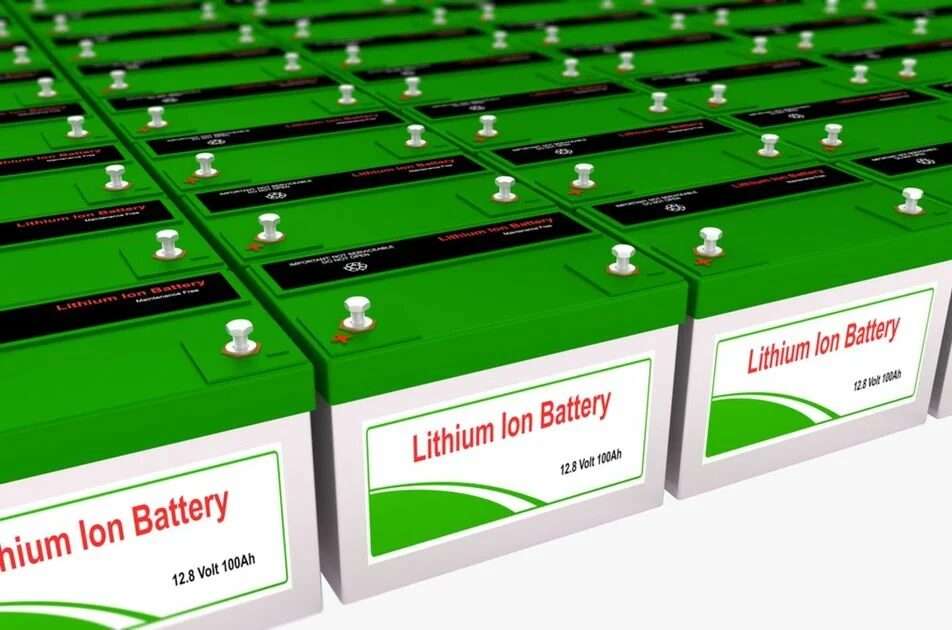The Future of Lithium-ion Battery Materials: Insights and Market Trends 2024-2034

Lithium-ion Battery Material Market: Growth, Trends, and Future Prospects 2034
The global lithium-ion battery material market is expected to increase at a compound annual growth rate (CAGR) of 23.8% between 2024 and 2034. Based on an average growth pattern, the market is expected to reach USD 315.36 billion in 2034. It is projected that the global market for lithium-ion battery materials would generate USD 43.78 billion in revenue by 2024.
The world moves towards cleaner, more sustainable energy sources, lithium-ion batteries (Li-ion) have become essential in powering various applications, ranging from smartphones to electric cars and energy storage systems. This surge in demand is positively influencing the market for materials used in lithium-ion batteries, including cathodes, anodes, electrolytes, and separators.
Request Sample PDF Copy:
Overview of the Lithium-ion Battery Material Market
A lithium-ion battery consists of several key components that determine its efficiency, lifespan, and performance. These components include:
Cathodes: Typically made from lithium cobalt oxide, lithium iron phosphate, or nickel-cobalt-manganese (NCM) alloys.
Anodes: Mostly composed of graphite, but other materials like silicon and lithium titanate are being researched for future applications.
Electrolytes: Usually a liquid or gel made of lithium salts that enable the flow of ions between the anode and cathode.
Separators: Thin membranes that prevent short circuits by keeping the anode and cathode from touching while allowing ion flow.
The growing demand for these materials is fueled by advancements in technology and increasing investments in research and development for more efficient, long-lasting, and environmentally friendly battery systems.
Lithium-ion Battery Material Market Segments
By Material Type
Cathode
Anode
Electrolytes
Separators
Binders
Others
By Battery Type
Lithium cobalt oxide (LCO)
Lithium iron phosphate (LFP)
Lithium Nickel Cobalt Aluminum Oxide (NCA)
Lithium Manganese Oxide (LMO)
Lithium Titanate
Lithium Nickel Manganese Cobalt (LMC)
Others
By Application
Automotive
Consumer Electronics
Industrial
Energy Storage Systems
Key Market Players
BYD Co., Ltd.
A123 Systems LLC
Hitachi, Ltd.
Johnson Controls
LG Chem
Panasonic Corp.
Saft
Samsung SDI Co., Ltd.
Toshiba Corp.
GS Yuasa International Ltd.
Key Drivers of Lithium-ion Battery Material Growth
Electric Vehicle Market Expansion
One of the primary drivers of the Lithium-ion Battery Material Market is the booming electric vehicle industry. As governments around the world implement stricter emission regulations and offer incentives for EV purchases, the demand for high-capacity and efficient batteries is soaring. Lithium-ion batteries are the preferred choice due to their higher energy density, longer lifespan, and lighter weight compared to traditional lead-acid batteries.
Rise in Renewable Energy Applications
Another significant factor contributing to market growth is the increasing deployment of renewable energy sources such as solar and wind power. Lithium-ion batteries are crucial in energy storage systems, helping to store surplus energy generated during peak production hours for use when demand exceeds supply. As renewable energy continues to gain traction, the demand for lithium-ion batteries and their materials will likely continue to rise.
Lithium-ion Battery Material Market Trends
Increasing Focus on Sustainability
As environmental concerns grow, there is a strong focus on the sustainable production and recycling of lithium-ion battery materials. Companies are investing in technologies to recycle battery components and reduce the environmental impact of mining raw materials. This trend is expected to lead to the development of a circular economy in the battery material supply chain, helping to address issues related to resource depletion and pollution.
Price Volatility and Supply Chain Challenges
Despite the growing demand for lithium-ion batteries, the market faces challenges such as the volatility in the prices of raw materials, including lithium, cobalt, and nickel. The extraction of these materials is often concentrated in a few regions, making the supply chain vulnerable to geopolitical risks and environmental concerns. As a result, there is growing interest in securing alternative sources and developing synthetic materials to stabilize prices and supply.
Emerging Markets and Geographies
The Asia-Pacific region currently dominates the lithium-ion battery material market, primarily due to the presence of major battery manufacturers in countries like China, Japan, and South Korea. However, other regions such as North America and Europe are expected to witness significant growth as they ramp up efforts to localize production and reduce reliance on imports. Investments in local manufacturing facilities and supply chains will support this growth and further bolster the market.
Challenges and Restraints
Environmental and Ethical Concerns
The extraction of raw materials for lithium-ion batteries, particularly lithium and cobalt, has raised environmental and ethical concerns. Mining operations can lead to habitat destruction, water pollution, and adverse effects on local communities. Additionally, cobalt mining has been linked to child labor and human rights violations in some regions, raising calls for greater transparency and responsible sourcing practices within the industry.
High Production Costs
The cost of producing lithium-ion batteries remains relatively high, which limits their widespread adoption in certain sectors. Although battery prices have been decreasing over time, manufacturers still face high material and manufacturing costs. Reducing the cost of key materials, improving production efficiencies, and developing new battery chemistries will be essential to making these technologies more affordable and accessible.
Future Prospects
The future of the Lithium-ion Battery Material Market looks promising, with continued growth driven by advancements in electric vehicles, renewable energy, and consumer electronics. In the coming years, the industry is expected to see innovations that improve battery efficiency, sustainability, and affordability. The rise of solid-state batteries, which offer greater safety and energy density, could further disrupt the market.
Conclusion
In summary, the Lithium-ion Battery Material Market is poised for significant growth in the coming years. The rise of electric vehicles, the expansion of renewable energy applications, and the increasing demand for portable electronics are all contributing to this growth. However, challenges such as price volatility, environmental concerns, and ethical issues related to raw material sourcing remain. As the market continues to evolve, innovations in battery materials and technologies will drive the transition towards cleaner, more sustainable energy solutions.